Creating a Garden for Wildlife
As a Garden Designer one of the most popular requests from clients is that they want a ‘Wildlife Garden’ and there is nothing I like more than helping people to create this. But what actually does this mean? Sadly the natural habitats of many British wildlife species have been eroded or destroyed over the years by human industrialisation and development. Large shopping complexes, housing and urban developments have replaced sprawling wildflower meadows and vast areas of countryside and wetlands. Whilst this is unavoidable with the progress of the modern world it makes it all the more important that we all play our small part in ensuring that our native British wildlife species have the habitat where it can flourish.
So what can we do? You don’t have to have a garden specifically designed to attract wildlife – anyone with an outdoor space can make small changes or additions to their garden and see their efforts rewarded when the wildlife starts to visit.
To make your garden attractive to wildlife you have to give them a reason to visit it. By fulfilling the basic necessities of any creature – food, water and shelter – you will see the species flock into your garden.
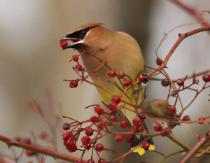 Food – When thinking about providing food for wildlife in your garden don’t think solely about the food which is physically placed out for birds or hedgehogs in feeders or on tables. Remember the trees, shrubs and flowers that we plant in our gardens provide a vast array of edible delights to our wild visitors. Consider having trees or hedging plants instead of fencing for your garden boundaries. Small trees such as a Rowan or a Crab apple and hedging plants such as Buckthorn, Dog rose, Hawthorn and Holly make great additions. Not only do these provide shelter for nesting birds and easy access to your garden for hedgehogs but many the berries of many hedging species also provide an essential food source.
Food – When thinking about providing food for wildlife in your garden don’t think solely about the food which is physically placed out for birds or hedgehogs in feeders or on tables. Remember the trees, shrubs and flowers that we plant in our gardens provide a vast array of edible delights to our wild visitors. Consider having trees or hedging plants instead of fencing for your garden boundaries. Small trees such as a Rowan or a Crab apple and hedging plants such as Buckthorn, Dog rose, Hawthorn and Holly make great additions. Not only do these provide shelter for nesting birds and easy access to your garden for hedgehogs but many the berries of many hedging species also provide an essential food source.
We would not have the majority of our fruit and vegetable produce without the work of pollinating insects such as bees, butterflies, and hoverflies so it is vital that we attract them into our garden to sustain their existence. Look to planting single nectar rich plants such as borage, marigolds, sunflowers, buddleia, phlox, sweet Williams, irises, asters, penstemons, violets or wildflowers as opposed to double or showy specimens such as roses, begonias, daffodils and tulips.
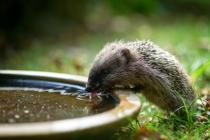
Water – All animals need to drink and having a source of water in a garden will almost always attract wildlife. Whether this be in the form of a birdbath to attract our feathered friends, a water feature, a pond or bog garden.
If you plan is to have a pond, make sure that one side of it is sloping to allow any creatures to drink or bathe and then climb out. A stepped, multi-level pond is the best design as you can place suitable planting at different levels, and this will oxygenate the water and create a happy eco-system which encourages frogs, toads and newts to take up residence and happily produce their next generation. If you don’t have the space or inclination to have a pond you can use smaller containers such as pots or even an old washing up bowl. Just ensure that different levels are built up using stones to ensure easy access and escape for thirsty wildlife visitors.
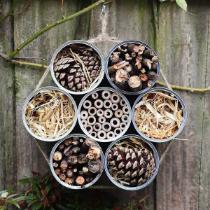
Shelter – The erosion of the natural landscape has not only decimated the food and water sources for a lot of creatures, but it has left far fewer areas for them to shelter. If you can provide a suitable environment in your garden it will not be long before you have some new visitors willing to set up home with you! Sadly, pristine cut lawns and sleek patios do not provide a good wildlife environment. Resisting the urge to mow and leaving a patch of grass long will provide shelter for many an insect or invertebrate. Likewise, a woodpile, a compost heap, a rockery, an area of weeds or nettles – whilst all these are possibly not the most attractive features of garden life, they provide a wonderful habitat for sheltering animals. Together with man-made items such as bird and bat boxes, hedgehog houses and bug hotels they can be placed in an area of the garden – a shady ‘Wild Corner’ – that is not on show if an aesthetically pleasing garden vista is what you desire. Ivy and evergreen climbers grown against a garden fence also provide a good choice for shelter for nesting winter birds.
By creating a wildlife friendly garden, or even an area of your garden, will reward you in many ways. Research has already proven that enjoying an outdoor space is good for your mental health and wellbeing and to watch beautiful birds feeding at close range and to hear the buzzing of bees and happy pollinating insects and butterflies is nature at its best. There is also a beneficial symbiotic relationship of having insects and wildlife in the garden as they are natural pest controllers. Hedgehogs, birds, bats and frogs amongst other animals will all keep our pest population down considerably.
If you do find that you still have a pest problem with aphids, slugs or snails please resist the temptation to use pesticides or slug pellets as these may harm the very creatures you are trying to attract. Try companion planting to lure the pests away from your favourite plants or vegetables. Or there are many more natural alternative pest control measures such as copper bands, nematodes or the use of egg shells, grit or beer traps for slug and snail control.
So come on let’s all make some small changes to the space we have to attract wildlife into our gardens. I guarantee you won’t regret it!
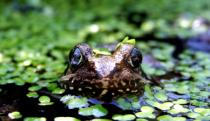

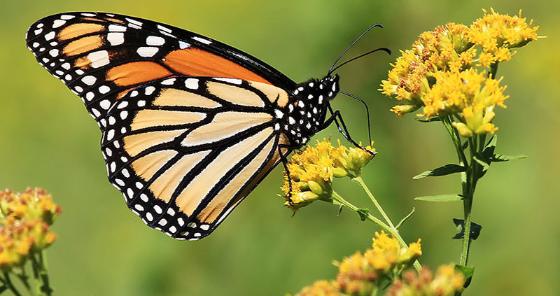

Leave a Reply
Want to join the discussion?Feel free to contribute!